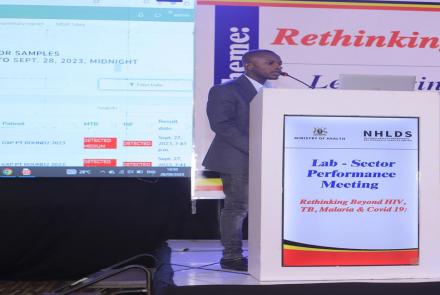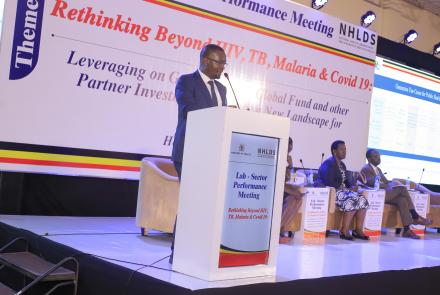Laboratory supplies and equipment are procured according to the national procurement guidelines. There is a stakeholders’ quantification exercise that annually determines nationwide procurement needs usually based on supply chain rationalization. Following standardization of laboratory tests, supplies and equipment, a list of the requirement for laboratory supplies and equipment at the different levels of care is put in place for facilities to use while placing orders at the respective warehouses. Laboratory supplies are procured through the National Medical Stores (NMS) for public facilities and Joint Medical Stores (JMS) for Private Not for Profit (PNFP) facilities and the warehouses have a streamlined distribution system based on orders from respective facilities.
The Government of Uganda (GoU) has stepped up health financing to meet the Uganda national minimum health care package (UNMHCP). However laboratory commodity budgeting has not been increased to match current demands. There is inconsistent supply of laboratory commodities and interruption of lab services due to stock outs especially for items that are not empowered by development partners. Logistics management training and mentorship to build capacity for the lab staff to effectively manage stocks has been an area of focus in the last 5 years. However these efforts have been frustrated by poor infrastructure for lab commodity storage making it difficult for proper storage and inventory management. Even though a harmonized laboratory equipment list exists to guide procurement and donation of equipment in the country, laboratory reagents and general supplies have not been harmonized. Efforts to build capacity of regional equipment maintenance workshops have been made but the challenge is inadequate staffing and lack of facilitation for the maintenance engineers to visit lower level facilities. Automated equipment are not covered within the scope of work for the regional workshops as the majority do not have service contracts with MOH. Thus automated equipment maintenance has remained donor dependent and vertically skewed towards the control of HIV and TB. The current strategy is to build capacity for the biomedical engineers to maintain automated equipment, certify biosafety cabinets and to cascade these skills to lower level laboratories.






